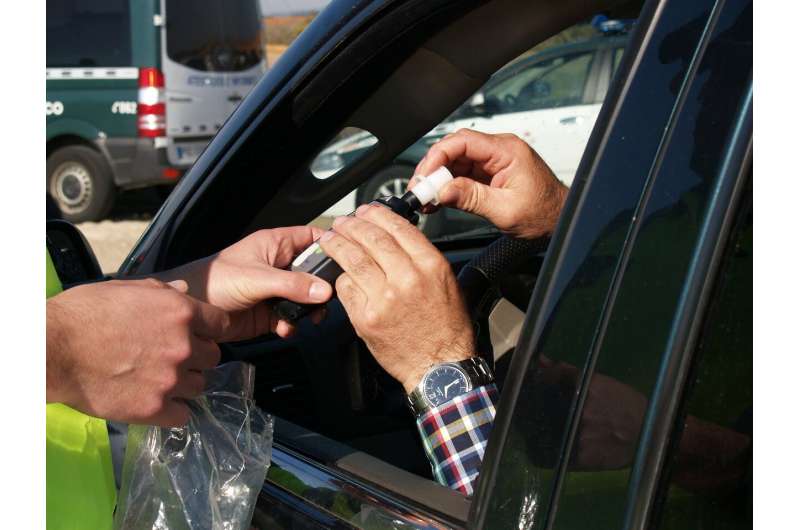Introduction of stricter drink drive limit has had 'no effect' in reducing accidents in Scotland

The introduction of a tougher drink drive limit in Scotland over six years ago has had 'no effect' at reducing drink driving or alcohol related collisions say the authors of a new academic study.
Publishing their findings in the Journal of Health Economics, the researchers from the Universities of Bath and Essex paint a worrying picture: there has been no change across all types of accidents involving alcohol as a result of the introduction of a stricter limit of 50mlg per 100mml introduced in Scotland in December 2014.
Their results were consistent for men and women, for younger and older drivers and whether accidents took place at night or in the day / in the week or at the weekend. In addition, the findings suggest the reform did not reduce other crimes as had been expected.
In December 2014, Scotland reduced its drink drive limit from 80 to 50mlg per 100mml of blood. This made Scotland's drink drive laws the toughest in the UK: for England, Wales and Northern Ireland the limit remained at 80mlg per 100mml of blood. The reform was designed to address problem drink driving and ultimately to reduce road deaths.
The tighter Scottish drink drive limit implies that the amount of alcohol somebody is legally allowed to consume and drive is roughly halved from the limit in England, Wales and Northern Ireland. Important caveats apply to this in relation to a person's size and metabolism, as well as what they have eaten and their stress levels. See gov.uk/drink-drive-limit for further details.
Drawing on extensive administrative data of road accidents over seven years from January 2009 (pre-reform) to December 2016 (post-reform)—comprising more than 1.2 million accidents—the researchers wanted to test the effects of the reform and consider what measures might still be required to reduce accidents.
Whilst they found that the reforms in Scotland, supported by a "heavyweight media campaign," led to stronger anti-drink drive sentiment among the public, this was not enough to tackle marginal drink driving. They conclude that drink driving has continued for a minority due to a lack of available and cheap transport alternatives, and weak law enforcement.
They found that Scots neither drove their cars less, nor switched to being driven because of the reform and that taxis and buses had not become cheaper or more available. As a result, the researchers argue that drink drive campaigns need to be reinforced with greater attention paid to alternative transport options.
More significantly, they found no impact of enforcement for drink-driving related offenses. Crucially, there were no more breath tests carried out following the reform than before it. If policymakers want to introduce stricter drink drive limits, these need to be backed up with stricter enforcement if the measure is to take effect among all groups, they suggest.
Researcher, Dr. Jonathan James from the University of Bath's Department of Economics explains: "Our results show that reducing the drink drive limit in Scotland has not led to a decrease in alcohol-related road accidents since 2014. These are significant findings which defy some of the expectations for what this reform hoped to achieve.
"Whilst a lower drink drive limit has helped to harden anti-drink drive sentiment among the public, the change in law appears not to have targeted those who cause the majority of alcohol-related road accidents: those who drink heavily and still drive. To tackle this, policymakers need to back up a stricter limit with tougher enforcement and rethink alternative transport options."
Professor Marco Francesconi from the University of Essex added: "Our results suggest that the effectiveness of the Scottish reform—and other similar future interventions—has to be accompanied by other public policies, such as sustained hot-spot policing or an entire reappraisal of the local public transport system."
More information: Marco Francesconi et al, None for the Road? Stricter Drink Driving Laws and Road Accidents, Journal of Health Economics (2021). DOI: 10.1016/j.jhealeco.2021.102487
Journal information: Journal of Health Economics
Provided by University of Bath




















